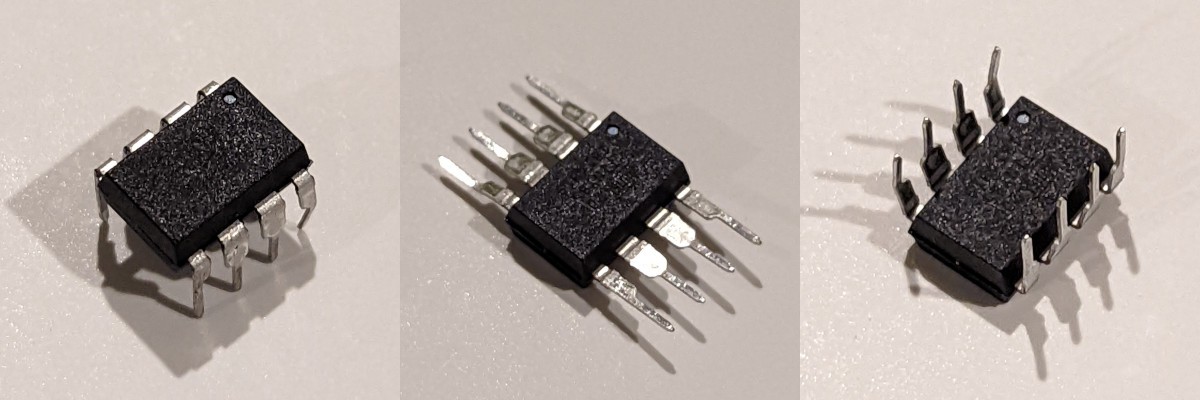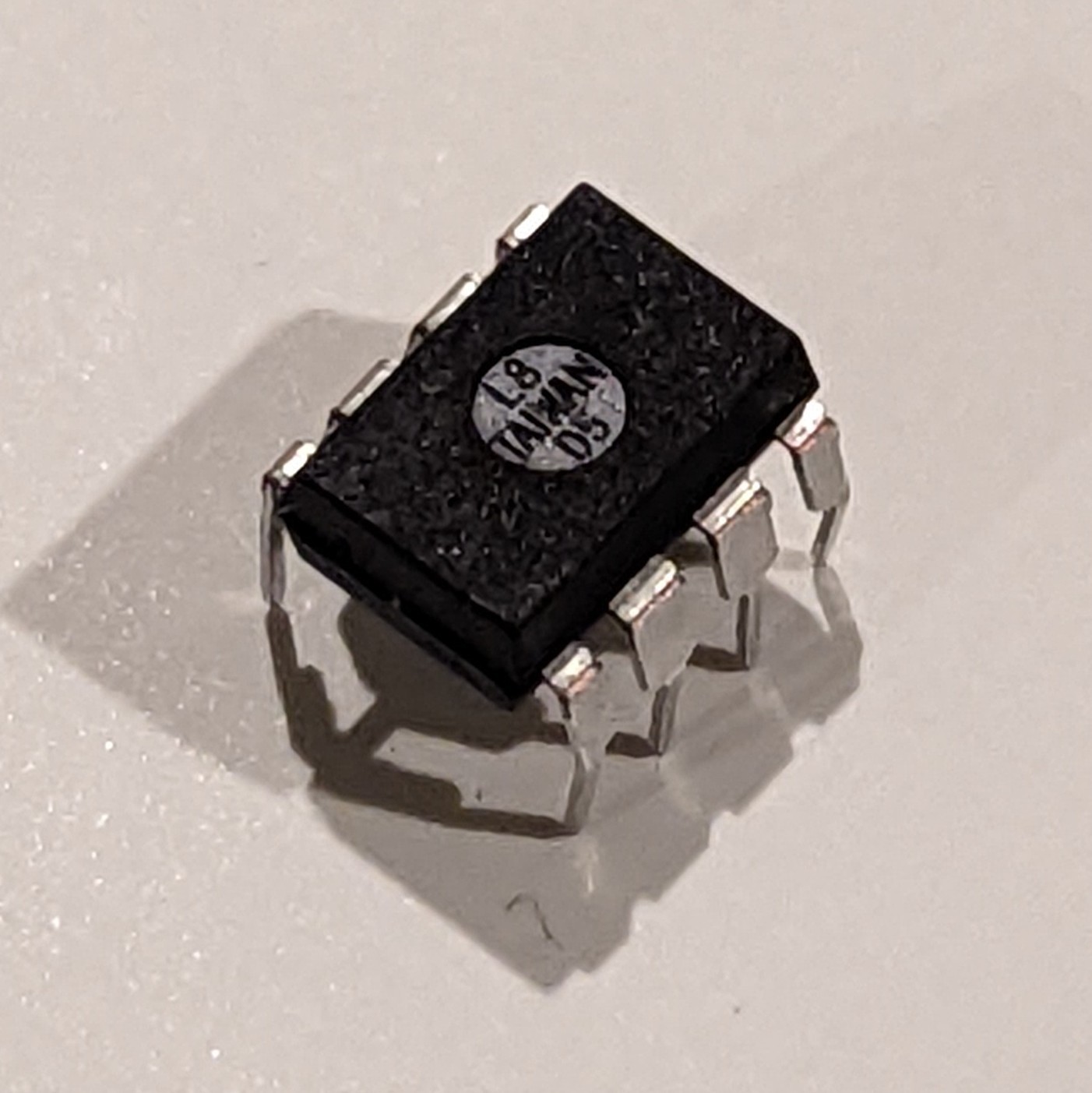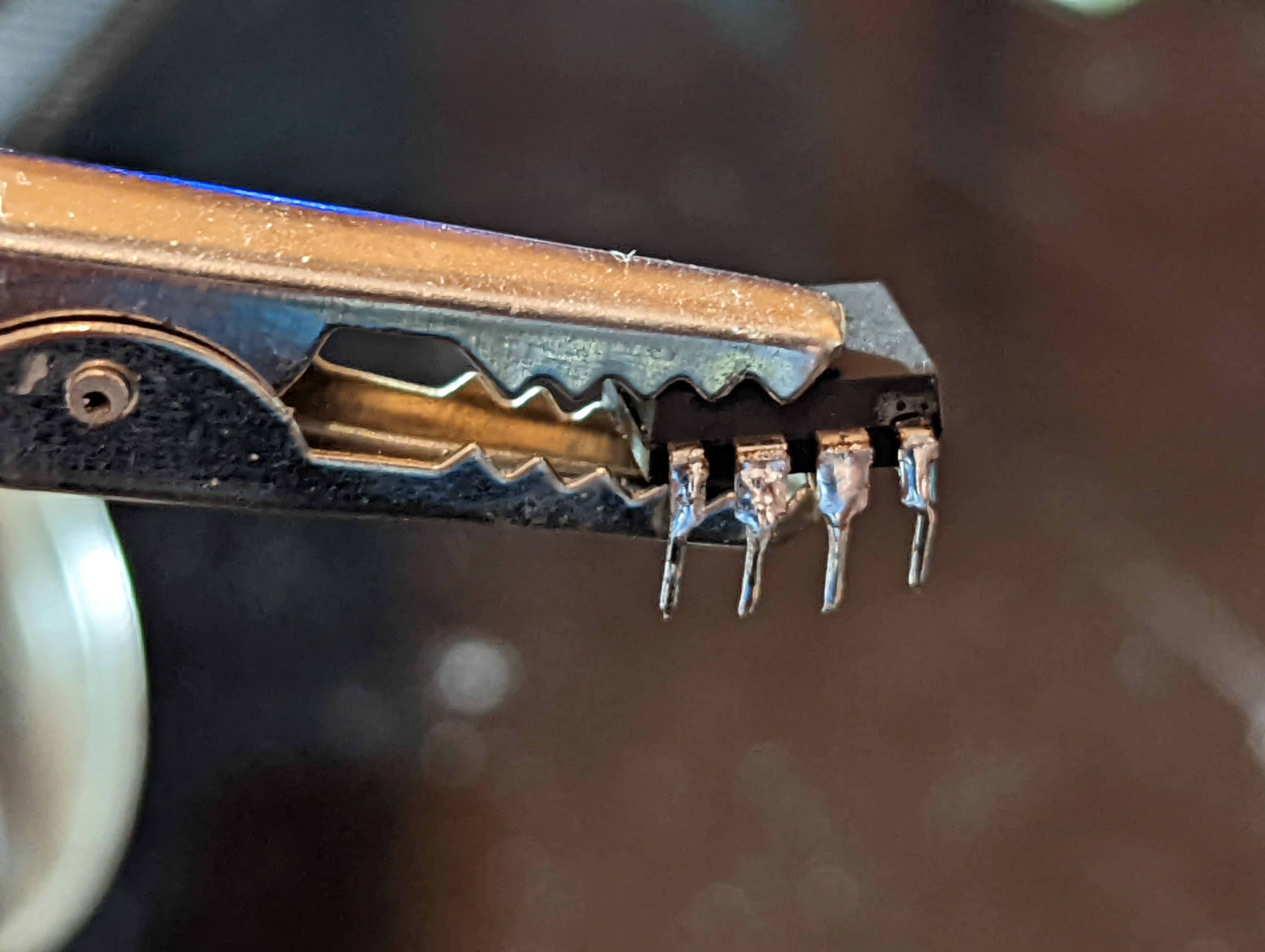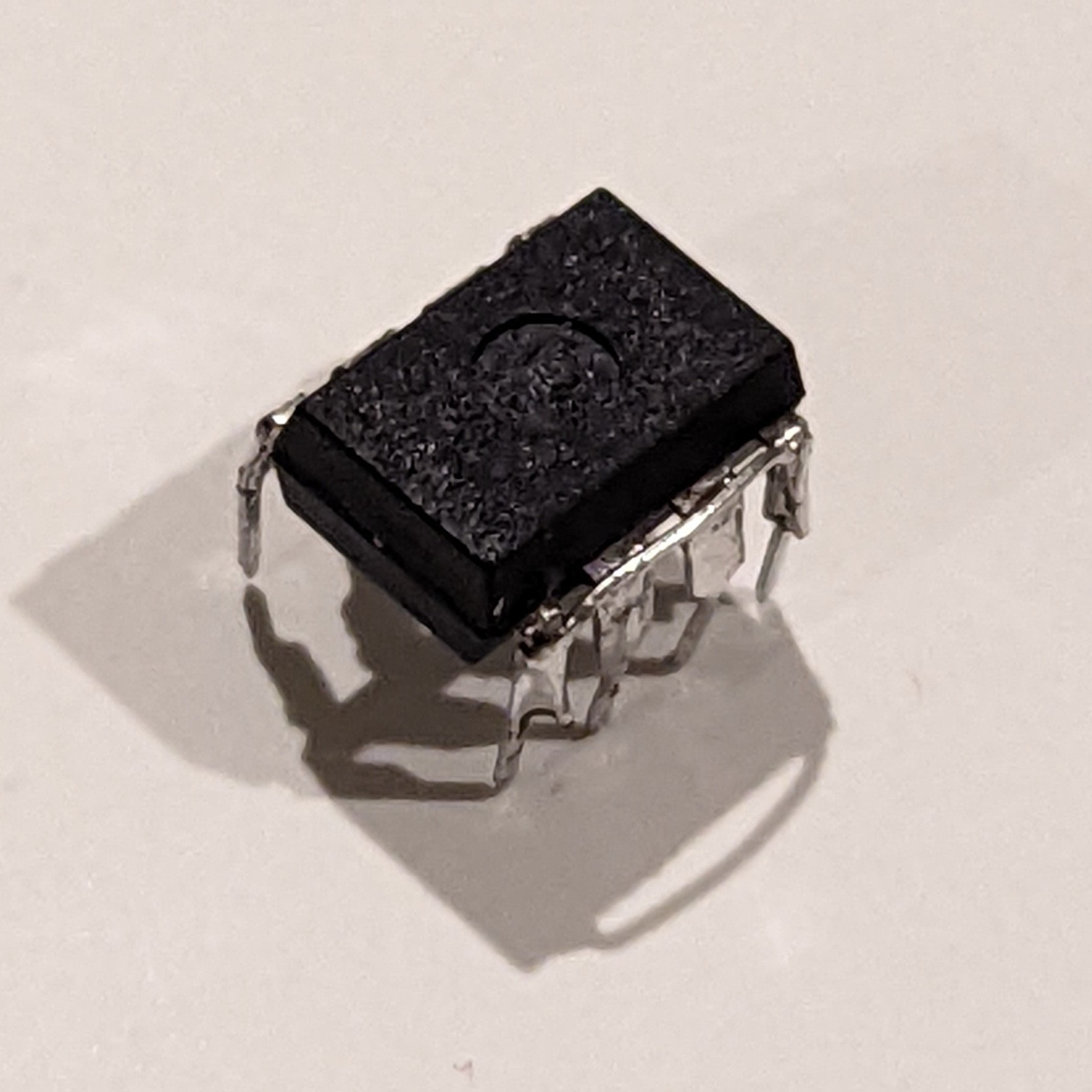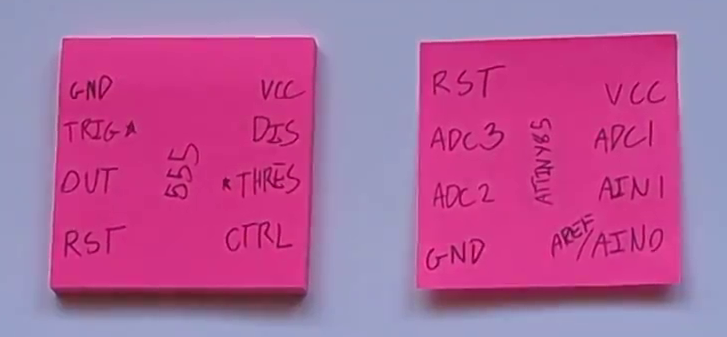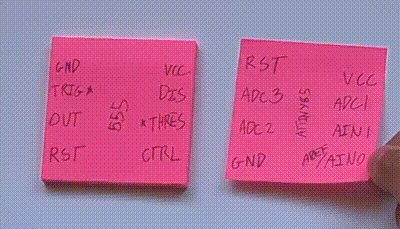-
Can your 555 do this?
01/07/2022 at 03:43 • 0 commentsBy overriding the output pin, I was able to get the ATTiny555 display its internal state on a Neopixel ring. Pretty cool, right?
You can check out the source code here!
-
Making the ATTiny555 more than a 1-trick pony
01/06/2022 at 22:04 • 0 comments@prabbit237 suggested an alternative way to set up the ATTiny555 so that it can be used for rapid prototyping, and I've used it to update the whole system and simplify the build process.
I'm soldering pin headers on the back of the chip, like so:
![]()
so I can reprogram the chip as many times as I like!
Now, all the 555-related code is in a single header, making it easy to integrate into whatever project you like. It just needs 2 extra lines of code:
#include "ATTiny555.h" void setup() { AT555_begin(); } void loop() { // your stuff here! }And because it uses interrupts, it leaves the loop completely open for you to do whatever you want!
What I find cool about this is that people have actually found potential use cases for this project (Looking at you, @Matthias Urlichs), so I think it's good that all the code is simpler to use.
-
Chip Flip Success
12/16/2021 at 03:42 • 0 commentsI finally got the time to code the ATTiny555 so that it works using a flipped and rotated chip, making it a near-perfect pin-compatible drop in for the real 555.
With this change, I was able to trade The Gotcha (the ground and reset pins being switched) for a smaller, almost unnoticeable catch (the control pin being connected to VCC). In most 555 timer circuits, the control pin is isolated to ground via a filtering capacitor, meaning that it could be at any reasonable voltage without causing problems. However, for the situations where you might need the control pin, take a long look in a mirror and ask yourself why you're entertaining the idea of using a microcontroller to genuinely replace an existing 555 timer.
For my sanity, and yours.
Anyways, this new version is now 100% pin compatible with a 555, and depending on the application, a drop-in replacement for the real stuff!
Here's an ATTiny85 running the new code, pre-operation.
With the code verified, it was time to make it a real 555! Hand me my scalpel, I'm going in.
To do this, I had to bend the chip's pins backwards...
![]()
Doing some stretching exercises with the lil' ATTiny Unfortunately, this caused some cracking near the pin's bases, which I tried to solve by filling them with solder.
![]()
Take a close look at the copper-colored stripes near the pin bases With limited success, unfortunately.
![]()
Here's how it looked like after. It was hard to get the solder in the cracks. Ignoring that mechanical flaw, I bridged what used to be PB0 with the VCC pin using a cut resistor lead I had laying around.
![]()
The ATTiny555 with the bridge wire between PB0 and VCC. And there it is! An ATTiny555 in all of its (limited) glory. No external components required!
-
A Crime Towards Chip Design
12/11/2021 at 01:30 • 0 comments...or a win for hackers?
I'm not sure.
In my pursuit of complete pin-compatibility, I think I found the solution. And guess what? It doesn't need any external components (more on that later).
![]()
A pinout of the 555 (left) compared the the ATTiny85 (right) As it is right now, the ATTiny555 is placed in a "standard" orientation, which means that the top of the chip is at the top of where the 555 would have been.
Although everything works as expected, there's still the issue of the ground and reset pins being swapped. Since both of these pins are connected in hardware, there isn't much that we can do about changing it. Although you can reflash the chip to disable the reset, it doesn't do much to help with the pinout issue.
But, what if the chip was flipped and rotated 180 degrees?
![]()
Now, the ground and reset pins are aligned.
But what about VCC? It's now where the control pin is. Well, here's the good news: normally, the control pin is isolated from ground via a capacitor. That helps us. All we have to do is bridge PB0 (the top right pin on the flipped/rotated chip) to the VCC pin, and we should be good. Since both the trigger and threshold pins are now aligned with ADC inputs, there's no need for external components! Cool!
I'm going to try this and let you all know how it goes.
 Shranav Palakurthi
Shranav Palakurthi
